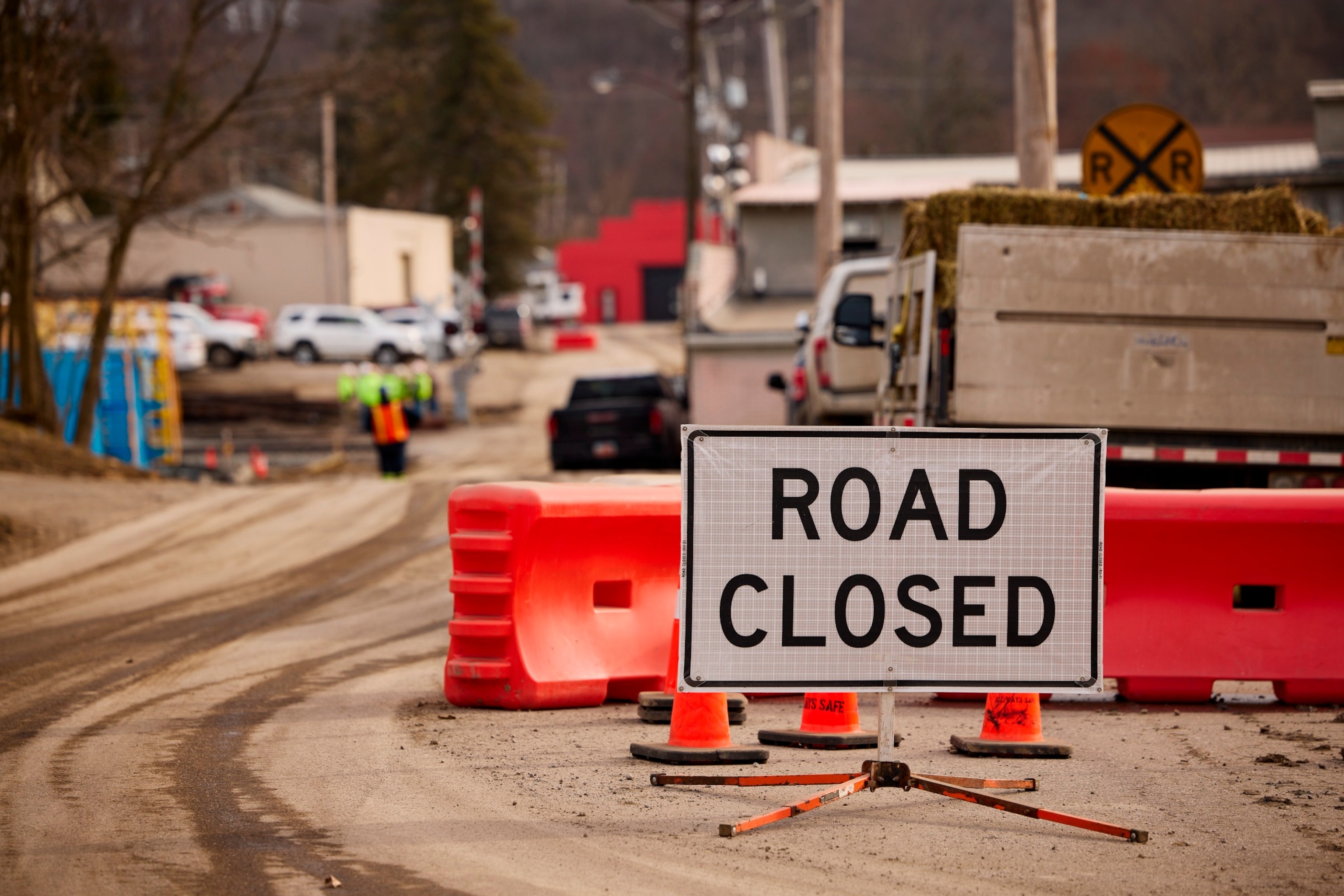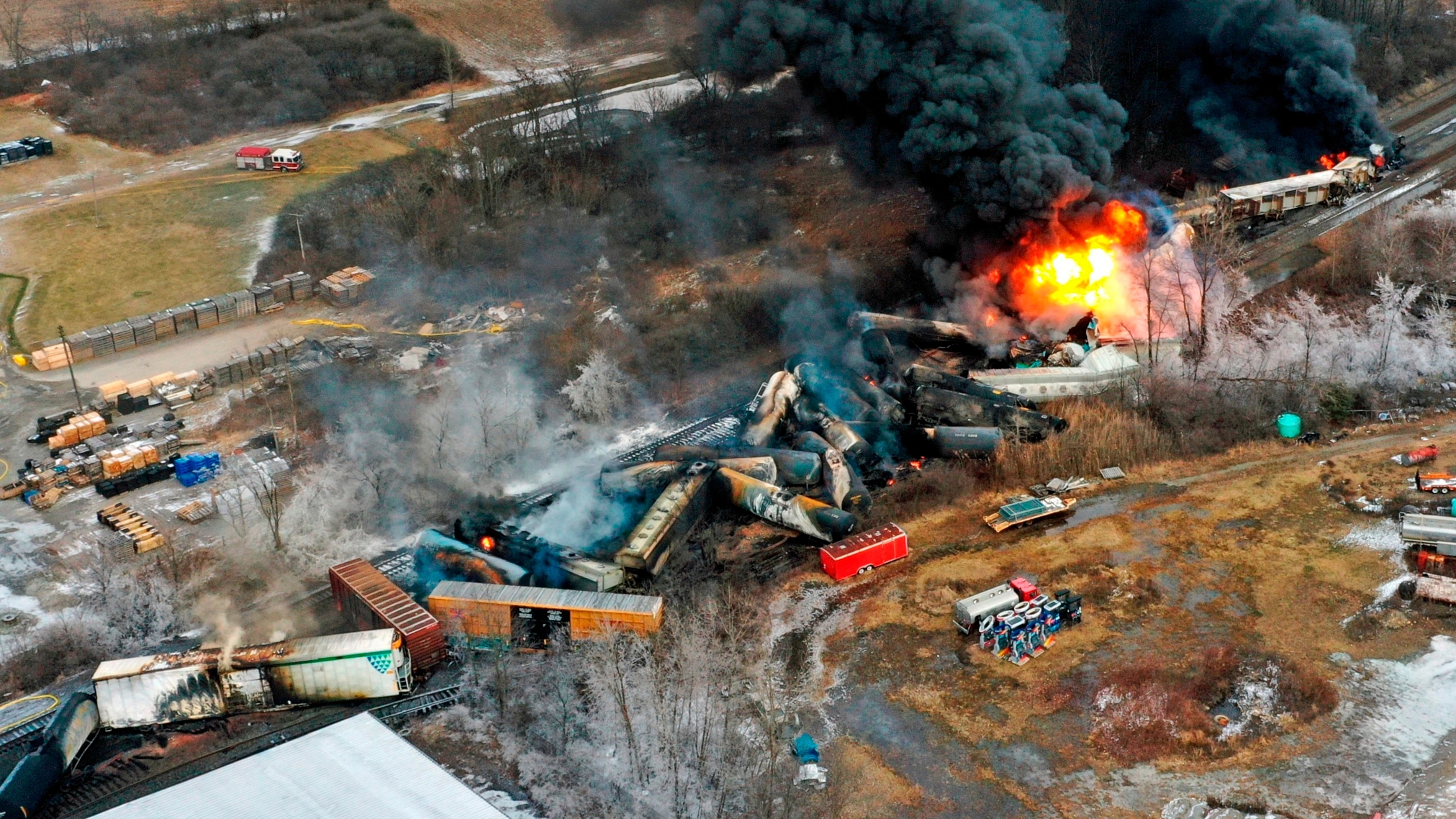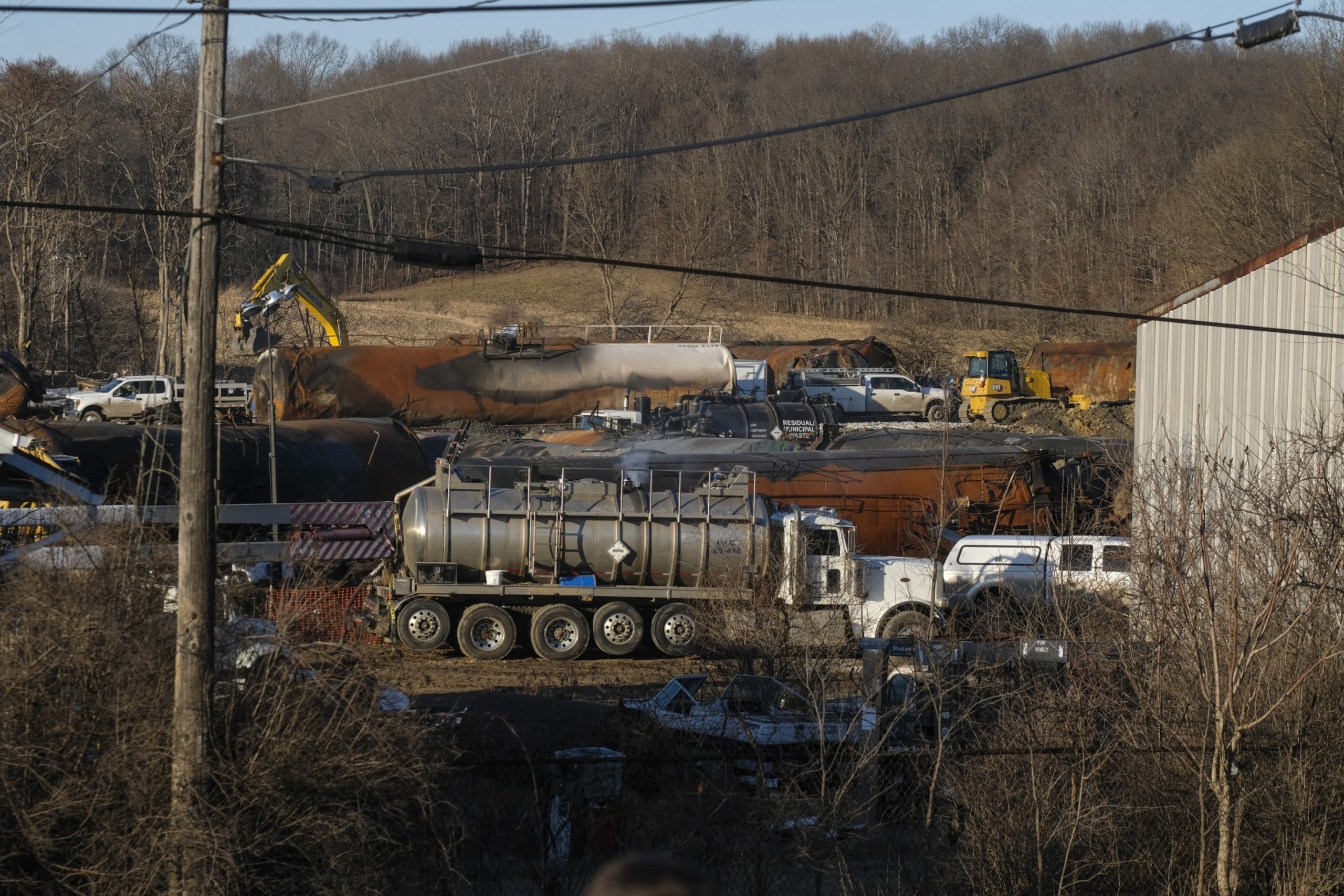The destruction from a massive train derailment in East Palestine, Ohio, spread far beyond the initial wreckage site, spewing “hazardous” pollution across 16 states, according to a newly released study.
On Feb. 3, 2023, a Norfolk Southern freight train carrying hazardous materials derailed in East Palestine — a village on the border of Ohio and Pennsylvania — sending toxic chemicals into the air, soil, creeks and lakes in the region, according to the study published in Environmental Research Letters on Wednesday.
In total, the pollution from the wreckage and subsequent controlled burn of several of the train’s cars spread over 16 states in the Midwest, Northeast and Southern U.S., reaching 540,000 square miles or 14% of the U.S. land area, according to the study.
Researchers estimate that 110 million residents, or one-third of the nation’s population, were impacted by pollution.

Wreckage from a Norfolk Southern train derailment in East Palestine, Ohio, Feb. 20, 2023.
Matthew Hatcher/Bloomberg via Getty Images, FILE
Eleven of the derailed cars were transporting hazardous materials, five of which contained vinyl chloride, a highly volatile colorless gas produced for commercial uses, according to the Centers for Disease Control and Prevention and the National Institutes for Health, at the time.
Several cars were also carrying ethyl acrylate and isobutylene, which are considered to be very toxic and possibly carcinogenic, the agencies reported.
Three days after the initial crash, officials authorized an hours-long controlled release and burn of vinyl chloride in five derailed tanker cars, “due to fear of an explosion of one or all of these cars,” according to the study, noting, the cars were carrying 115,580 gallons of the flammable gas.

A road sign stops traffic near the site of a train derailment on Feb. 14, 2023 in East Palestine, Ohio.
Angelo Merendino/Getty Images, FILE
A large ball of fire and a plume of black smoke filled with contaminants could be seen billowing out from the derailment site as the controlled burn took place. This prompted concerns from residents about the potential negative health effects of the burn.
In the study published Wednesday, researchers analyzed rain and snow water samples collected at 260 sites from surrounding states the week of the derailment (Jan. 31) and the week after (Feb 14).
“Our measurements revealed a large areal impact from the Midwest through the Northeast and likely Canada, and perhaps as far south as North Carolina,” according to the study.
Researchers discovered that “exceptionally elevated levels” of Chloride and pH levels were found in northern Pennsylvania and along the U.S.-Canada border, compared to historic data.
Pennsylvania, Michigan, Massachusetts, Wisconsin and almost every site in New York were flagged as having soot ash and dirt in the samples, according to the study.

This photo taken with a drone shows portions of a Norfolk Southern freight train that derailed Feb. 3, in East Palestine, Ohio, are still on fire on Feb. 4, 2023.
Gene J. Puskar/AP, FILE
Pollutants in the air reached southern states including Virginia, Tennessee and Kentucky, according to the study.
Researchers found that 19 sites had at least one chemical compound in the 99th percentile, while eight sites had four or more compounds in the 99th percentile.
“The impacts of the fire were larger in scale and scope than the initial predictions, and likely due to the uplift from the fire itself entraining pollutants into the atmosphere,” researchers wrote.
Following the derailment, Dr. Erin Haynes, chair of the University of Kentucky’s Department of Epidemiology and Environmental Health, surveyed approximately 400 adults in the East Palestine area about their health effects after the accident.
Haynes found that three out of four residents suffered health impacts after the derailment and over half of the residents reported their conditions continued through fall of 2023.
Nose and eye irritation, coughing and wheezing, nausea, vomiting, diarrhea, rashes and feeling weak and tired were among the symptoms reported, according to Haynes.
In April 2024, Norfolk Southern agreed to a $600 million settlement to resolve a class action lawsuit related to the train derailment.
A recent study has found that the train derailment in East Palestine, Ohio, caused the spread of hazardous pollution to 16 states across the country. The incident, which occurred in early October, resulted in the release of toxic chemicals and pollutants into the air and water, posing a significant risk to public health and the environment.
The train derailment, which involved a freight train carrying hazardous materials, occurred near the town of East Palestine, Ohio. The train was carrying a variety of chemicals and pollutants, including chlorine gas, sulfuric acid, and other toxic substances. When the train derailed, these chemicals were released into the air and water, creating a dangerous situation for residents in the area and beyond.
According to the study, which was conducted by a team of researchers from several universities and environmental organizations, the spread of hazardous pollution from the train derailment reached as far as 16 states across the country. The pollutants were carried by wind and water currents, contaminating air and water sources in neighboring states and posing a risk to public health and the environment.
The study also found that the pollution from the train derailment had a significant impact on local ecosystems and wildlife. Fish and other aquatic species in nearby rivers and streams were found to have elevated levels of toxic chemicals in their tissues, indicating that the pollution had entered the food chain and was affecting wildlife populations.
In response to the study’s findings, environmental groups and local residents have called for increased regulation of the transportation of hazardous materials by rail. They argue that stricter safety measures and oversight are needed to prevent future incidents like the East Palestine train derailment from occurring and causing widespread pollution and harm.
The study’s findings serve as a stark reminder of the potential dangers posed by the transportation of hazardous materials by rail. It highlights the need for greater vigilance and oversight to ensure the safety of communities and the environment, and to prevent incidents like the East Palestine train derailment from causing widespread pollution and harm in the future.



